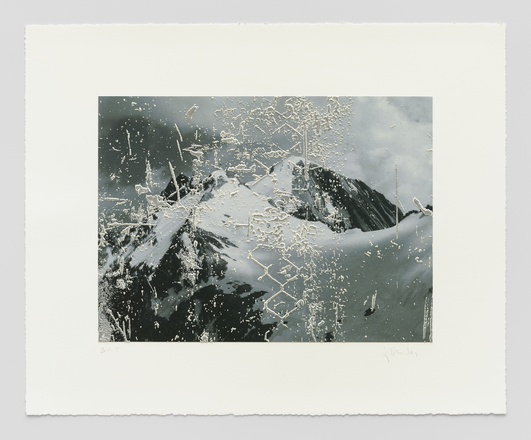Rudolf Stingel
Untitled (2023)
“Untitled” (2023) presents a view of a majestic rock massif with snow-covered peaks, yet at the same time, the work disturbs this sight of the sublime by layered adhesions on top of the picture plane that are based on fragments of one of Rudolf Stingel’s abstract paintings. The background motif, too, references one of the artist’s earlier works: namely, his monumental paintings of mountain ranges in the South Tyrolean Alps, which were first exhibited at the Neue Nationalgalerie, Berlin, in 2010. As with most of thegrisaille works shown there, this edition created especially for TEXTE ZUR KUNST goes back to a series of Alpine photographs from the 1940s, taken by the father of the Merano-born artist. Stingel’s renderings of these photos enlarge not only their subject in detail but also the scratches and dirt that, as a physical presence, have marked the photographs with a (family) history that exceeds the moment of their exposure: as such, in the paintings, photography is staged as both a form of representation of objects and a material object in itself. While the marks of time seem to have been erased in the digital print made for TEXTE ZUR KUNST, other traces cover “Untitled” ina relief-like manner through the choice of a special printing process. They endow the print with an object quality that is typical of the artist’s oeuvre, as expressed, for example, in his installations featuring Celotex insulation panels, on whose malleable surface visitors can leave their marks and traces. “Untitled” does not have such an interface, yet this work also transcends the two-dimensional surface of the image medium in order to enter the three-dimensional reality of the viewer.

